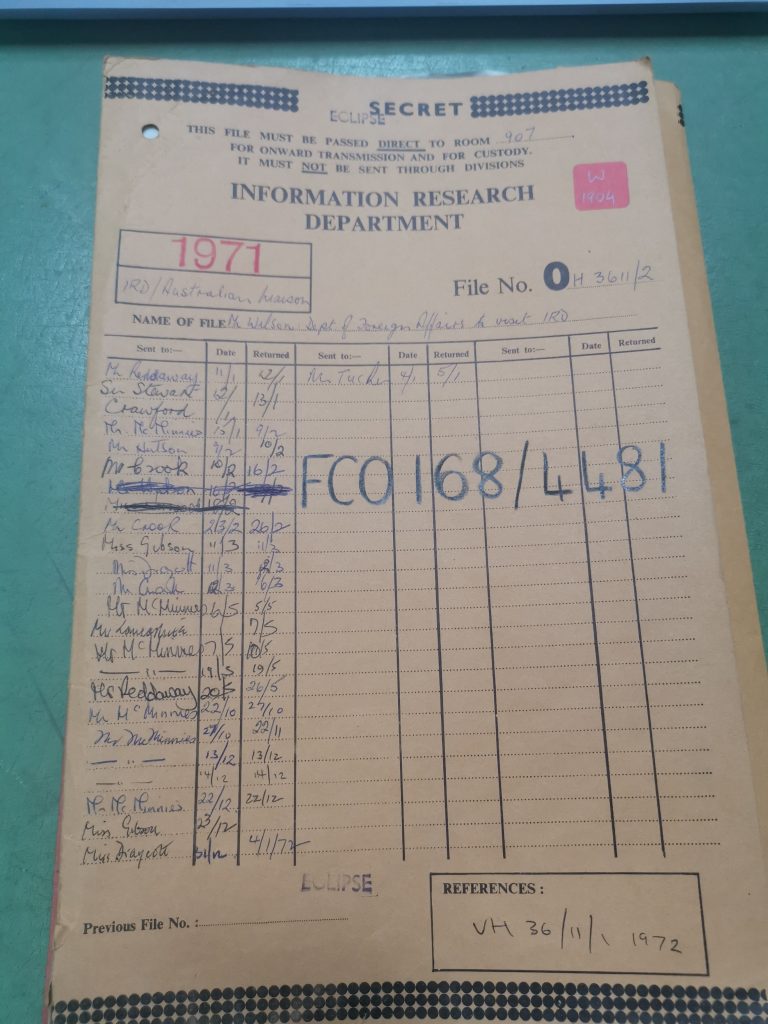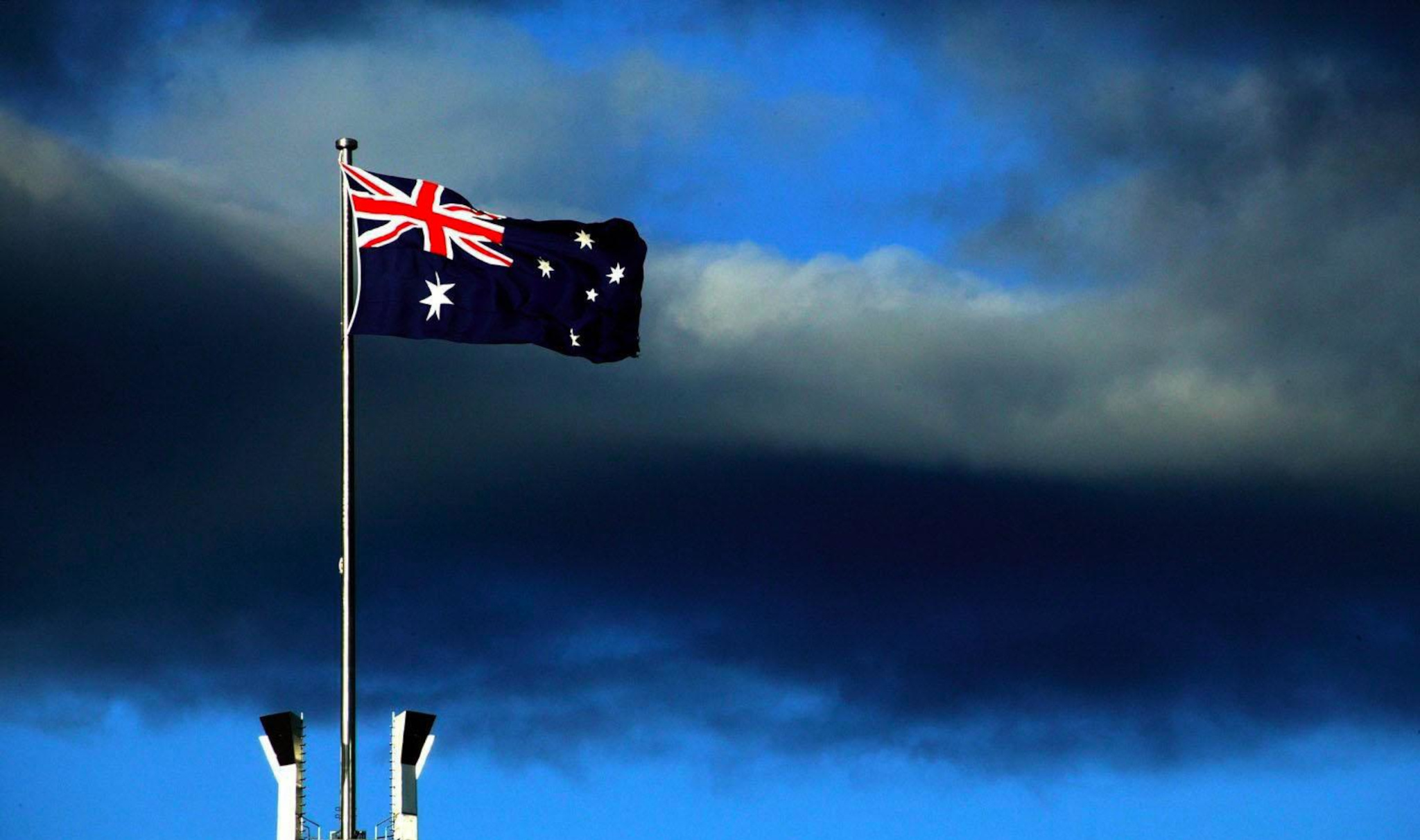In the early 1970s, officials from Australia’s Department of Foreign Affairs (DFA) visited Britain for propaganda training. This culminated in the creation of an Australian propaganda unit in 1971, whose operations were focussed on preserving Western power across Asia.
The unit was modelled on the Information Research Department (IRD), which was Britain’s covert Cold War propaganda arm between 1948 and 1977. It was also staffed with two former IRD officials.
The IRD covertly collected and disseminated material to the media to discredit human rights figures, undermine political opponents overseas, help overthrow governments, and promote UK influence and commercial interests around the world.
Details of Australia’s propaganda unit have remained secret until revealed in newly declassified Foreign Office files, and shine a renewed light on Anglo-Australian security co-operation during the Cold War.
‘Off with it like a racehorse’
In late 1970, UK Foreign Office official Norman Reddaway visited Canberra for a Four Power Information Meeting, involving Britain, Australia, New Zealand, and the US.
Reddaway was a seasoned British propagandist. After serving in the Second World War, he joined the Foreign Office and played a key role in setting up the IRD. In the 1960s, he was assigned as the “coordinator of political warfare” in Indonesia, where Britain was inciting massacres in its effort to overthrow President Sukarno.
By 1970, Reddaway was concerned about a “diminution of British interest” in Asia. Two years earlier, the Harold Wilson government had announced the withdrawal of British troops from major military bases in South East Asia, notably Singapore and Malaysia. Meanwhile, the IRD was undergoing a structural reorganisation, and facing funding and staff losses.
Reddaway thus wanted to plug a gap of declining Western influence in the Asia-Pacific, and recommended that Australia boost its propaganda effort in the region.

In Canberra, Reddaway asked the Australian foreign affairs chief Keith Waller whether Australia “should contemplate doing some information policy work” of its own. He proposed that Australia “send someone to London to look at the work and functions” of the IRD.
In February 1971, the head of the information and cultural affairs branch of DFA, Michael Wilson, was dispatched from Canberra to the UK for two weeks. In London, he held “several long talks” with IRD officials about “setting up an IRD organisation for Australia”.
He was also given “a comprehensive picture of IRD’s present structure, the work of Asia and editorial sections, and IRD activities in SE Asia”.
Wilson was impressed by “the bipartisan nature of the support for IRD” in Britain, as well as “the lack of any political controversy surrounding it”. In Australia, however, he feared that a similar propaganda unit would be used domestically by rival Australian politicians.
In early 1971, in the face of the disastrous Vietnam war and a resurgent Labor Party, head of the Treasury Billy McMahon and Defence Minister Malcolm Fraser were plotters in an internal party coup against their sitting Liberal Party Prime Minister John Gorton, with McMahon emerging as the new Prime Minister.
“If we let Billy loose with an outfit like this,” Wilson told British IRD official K.R. Crook, “he’d be off with it like a racehorse, using it against Fraser and Gorton”. Crook privately noted: “One has an awful fear that he could be right!”. (Indeed, the IRD was frequently used by the British government against perceived domestic opponents).
Wilson returned home to Australia via Hong Kong, where he secretly met the UK Regional Information Officer and “held several long talks on… setting up an IRD organisation for Australia”. The senior Australian diplomat in Hong Kong was “not, repeat not, conscious of the purpose of Wilson’s [prior] visit to London”.

‘That thieves kitchen of CIA stringers and dubious characters’
In May 1971, Waller informed Whitehall that Australia would “embark on a limited amount of information policy activity” – or propaganda – and said he was “interested in the possibility of recruiting a small number of IRD research and journalist staff”.
By October 1971, DFA official Noel Ross Smith was selected as the Principal Research Officer to head up the secret propaganda unit. Ross Smith had been a journalist with the ABC and Sydney Morning Herald, before joining the Australian News and Information Bureau (ANIB) inside the Department of the Interior, and later served in several Australian embassies.
In November 1971, Ross Smith visited the UK for a six-week attachment to the IRD. The purpose was for him “to learn as much as possible the detail of the [IRD] operations”, covering “projects, sources of information, contacts, production and distribution”.
Ross Smith was thus able to study “how IRD works as an all-purpose unattributable information arm”.
“As it is as much in our interest as in that of the Australians to get their organisation off the ground, we have given Ross Smith all the help we can”, wrote one IRD official, although details of some of the IRD’s covert operations were not handed over.
After his six-week attachment with the IRD, Ross Smith flew to Hong Kong, Bangkok, and Singapore for additional guidance on Britain’s propaganda operations across Asia. In Bangkok, he met with British embassy official David McBain, senior Hong Kong Government Information Service journalist Peter Moss, and Australian embassy press attaché Eric Sparke.
They met at the Foreign Correspondents Club at the Oriental Hotel, which McBain described as “that thieves kitchen of CIA stringers and other dubious characters”.
Australia’s own secret IRD
Australia’s propaganda unit commenced operations in late 1971, and was situated within the Political and Social Research Section (PSR) of the DFA.
In June 1973, IRD chief Thomas Barker wrote that “the Australians have for the last two years had a modest counterpart to IRD. Their organisation… was set up in 1971 on the basis of advice requested from, and provided by, IRD”. Its staff included “two former members of IRD”.
“There is an exchange of output, and consultation about this, between the two Departments,” Barker continued.
“The two efforts are largely complementary, as theirs concentrate on the South West Pacific area where our coverage is comparatively modest. The Australians are working up distribution of their material in South-East Asia, and beginning to cultivate potential recipients in the UK through Australia House, who have sought our advice”.
With the Australian propaganda unit modelled on the IRD, the “material” distributed would likely have been unattributed research briefs and articles written for newspapers and journals, and the “potential recipients” would have been cooperative journalists writing on the region.
According to Barker, ASIO, the Australian Security Intelligence Organisation and ASIS, the Australian Secret Intelligence Service, “appeared to be aware of Mr Ross Smith’s activities…, and I believe [the unit] has access to classified material in the same way as IRD has; but I rather doubt if he yet gets the full range of Australian intelligence output”.
The familiar model
The unit was in operation for at least three years, and it remains unclear when it was eventually shut down.
In October 1974, the British embassy in Canberra reported that Ross Smith had “left the Political and Social Research Section” to take up a position as Consul-General in Lae, Papua New Guinea, as the Australian territory prepared for independence in 1975.
Ross Smith later went on to serve as Australia’s High Commissioner to Nauru and Malta, and is now deceased.
After Ross Smith’s departure from the secret unit, the British embassy in Australia asked that future correspondence from the IRD be addressed to Australian DFA official, Richard Butler, who was at the time Acting Head of the PSR.
Butler told Declassified he had been appointed to the PSR section in 1974 by the DFA’s then Head of Public Affairs Richard Woolcott, who later served as Australia’s ambassador to Indonesia during its brutal invasion of East Timor in 1975.
Butler said he had been briefed by Woolcott to prepare press materials explaining the government position on East Timor for both other diplomats and for the domestic public. Australia supported Jakarta’s invasion and occupation of East Timor, during which over 180,000 people were killed.
Woolcott, now aged 95, told Declassified he could not recall the unit nor any contact with IRD.
Butler said his work in the PSR was usual public information work, focussing on explaining Australian government policy to the public. While he knew of Ross Smith, he says he was unaware of his precise role and hadn’t known about an IRD counterpart in Australia.
Australian files on IRD and PSR remain classified.





